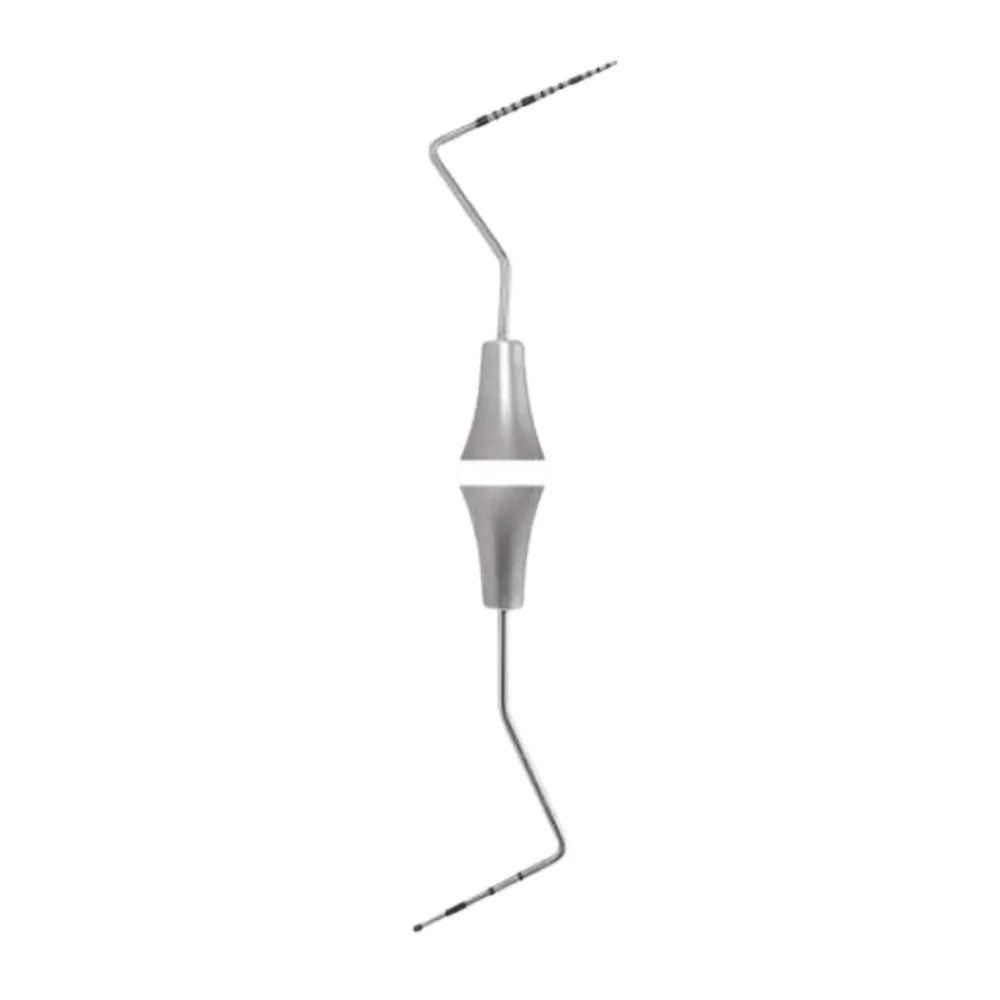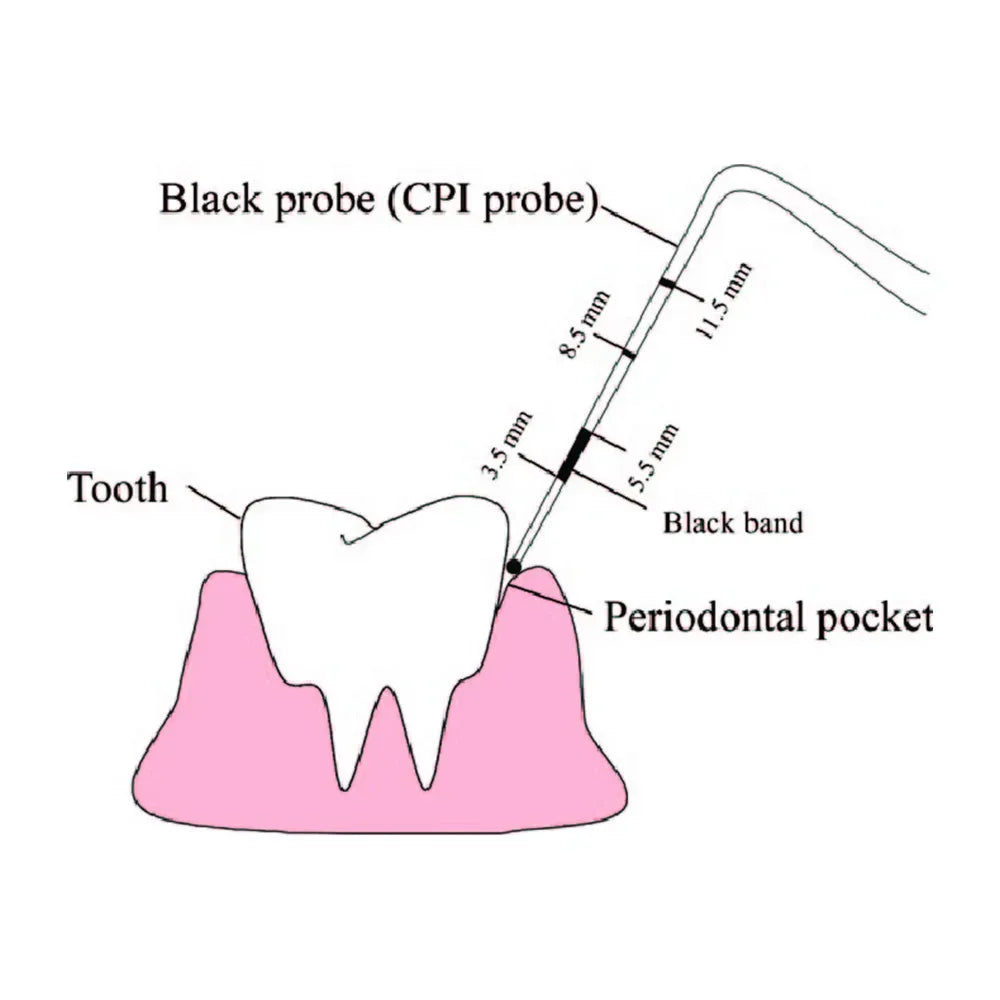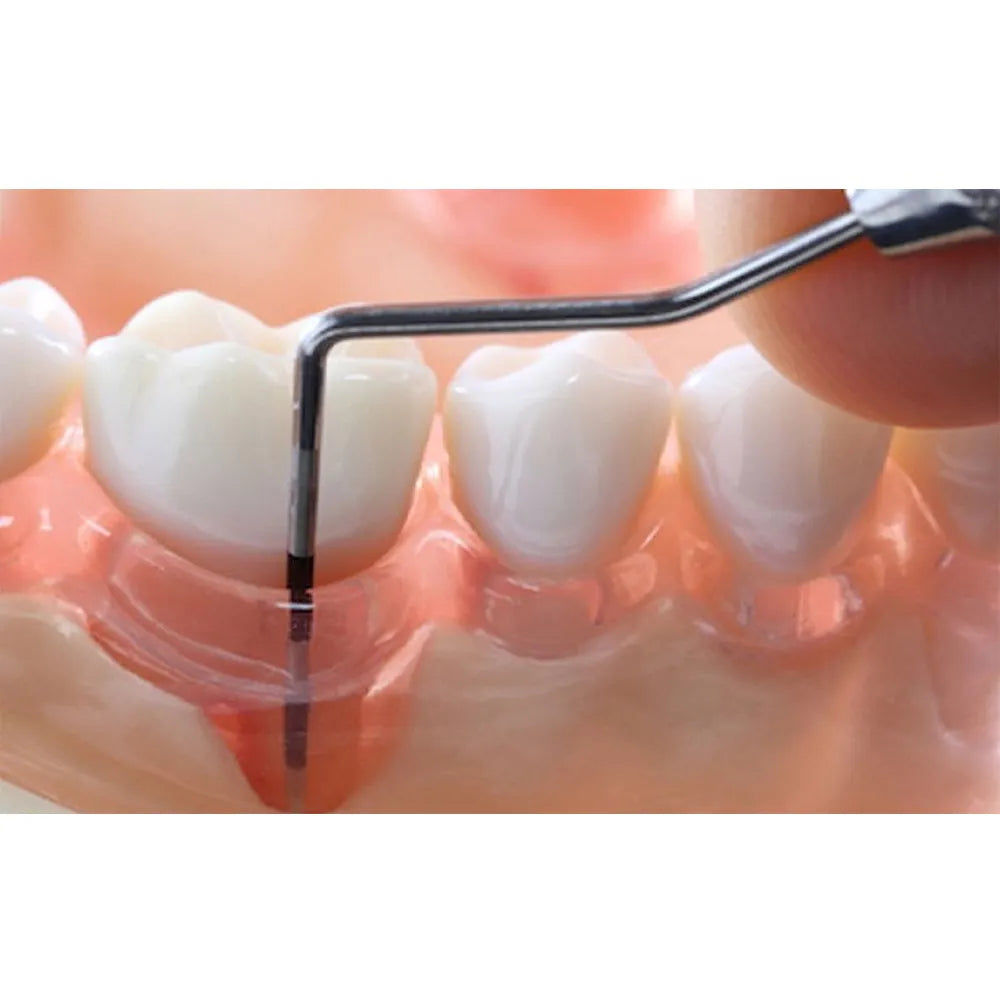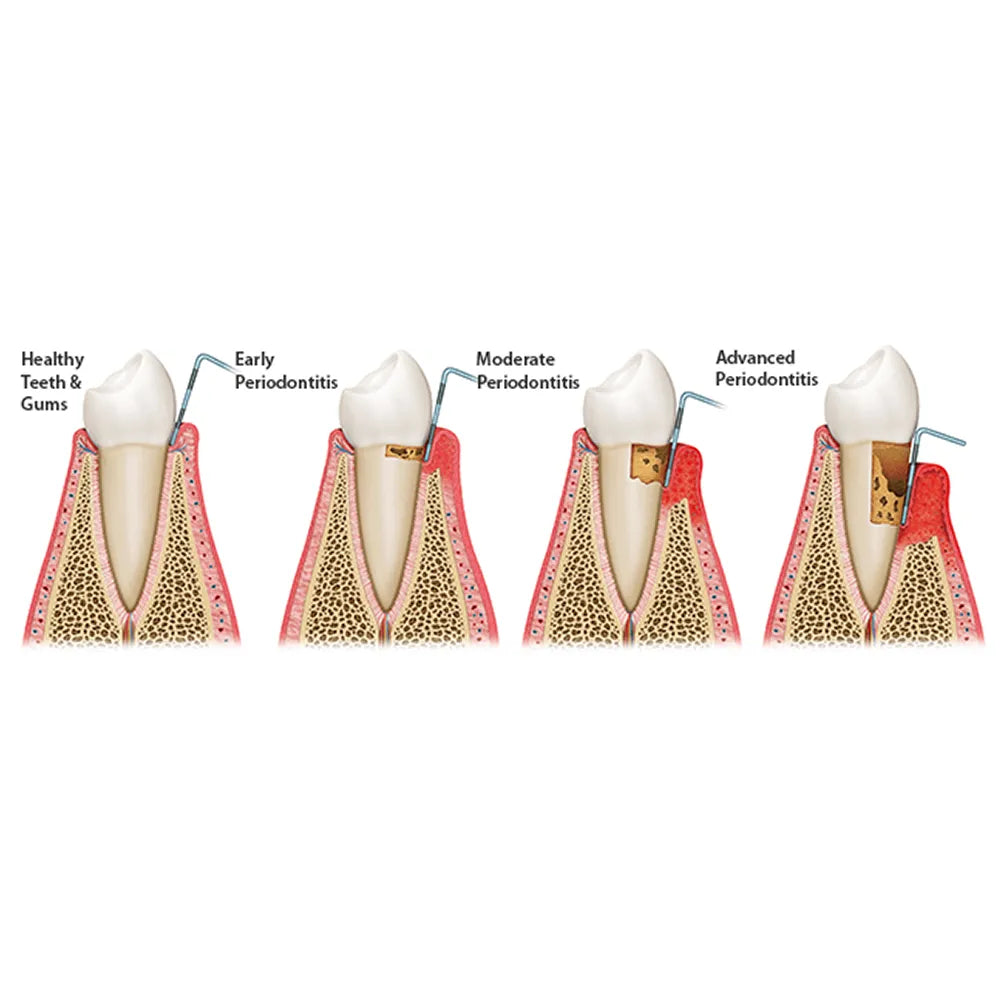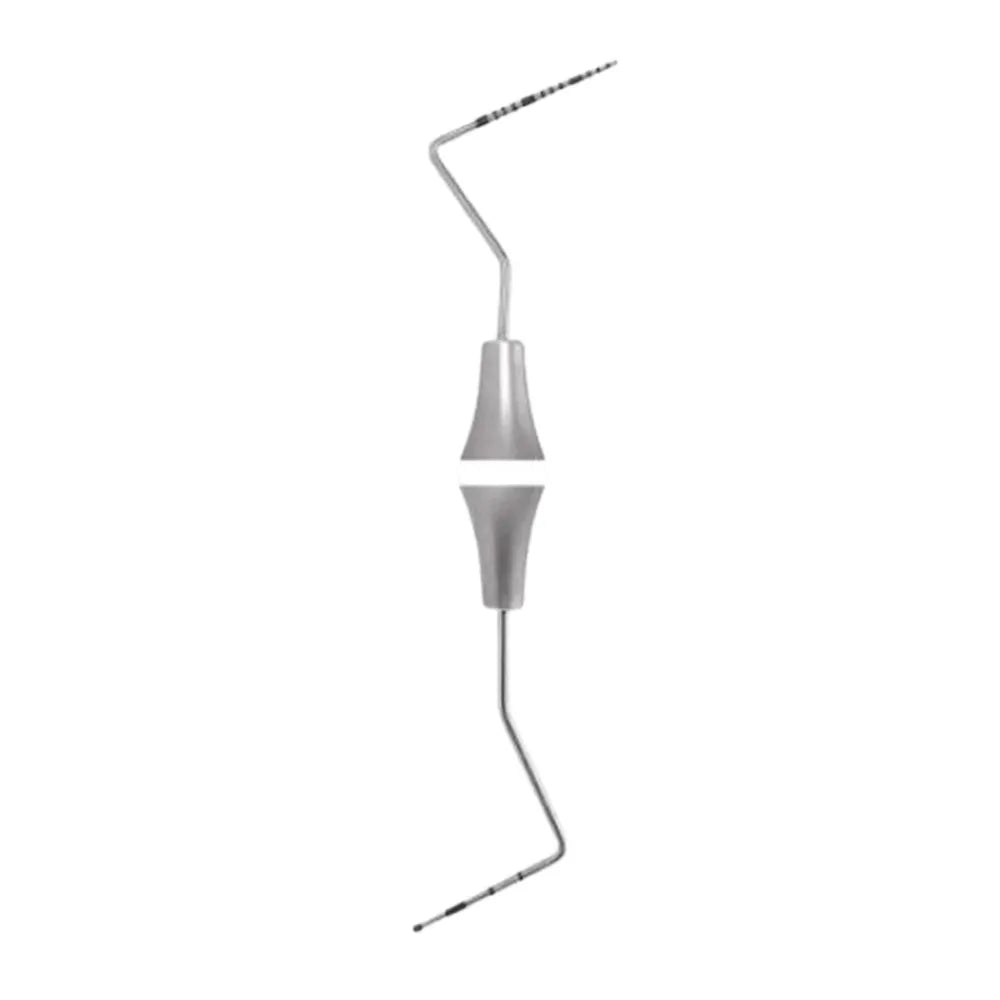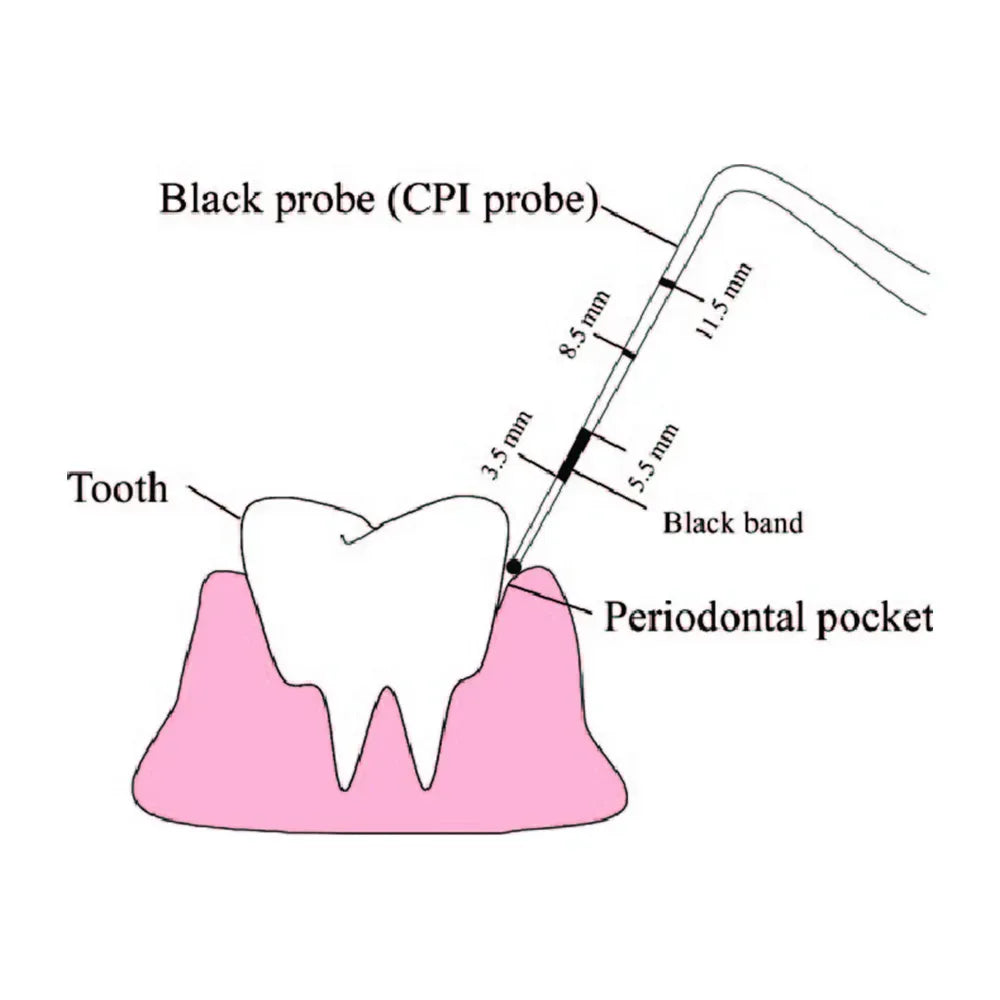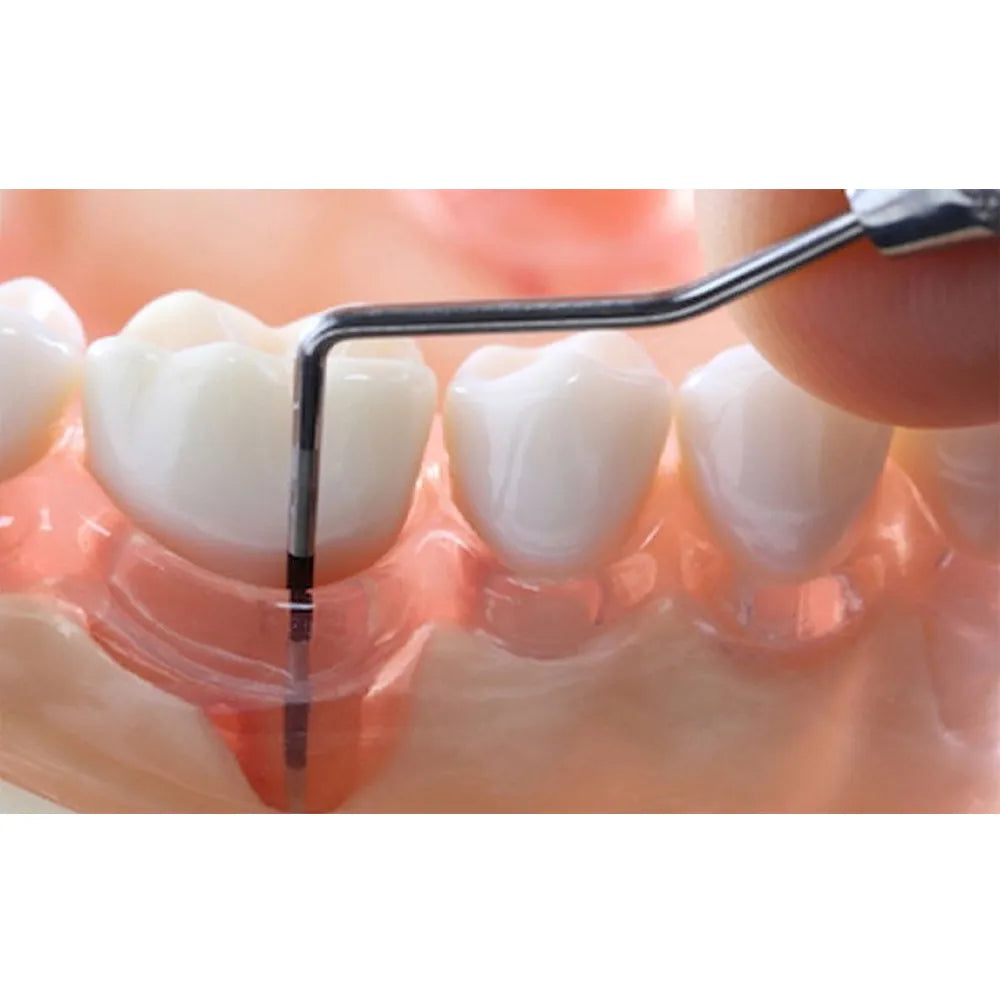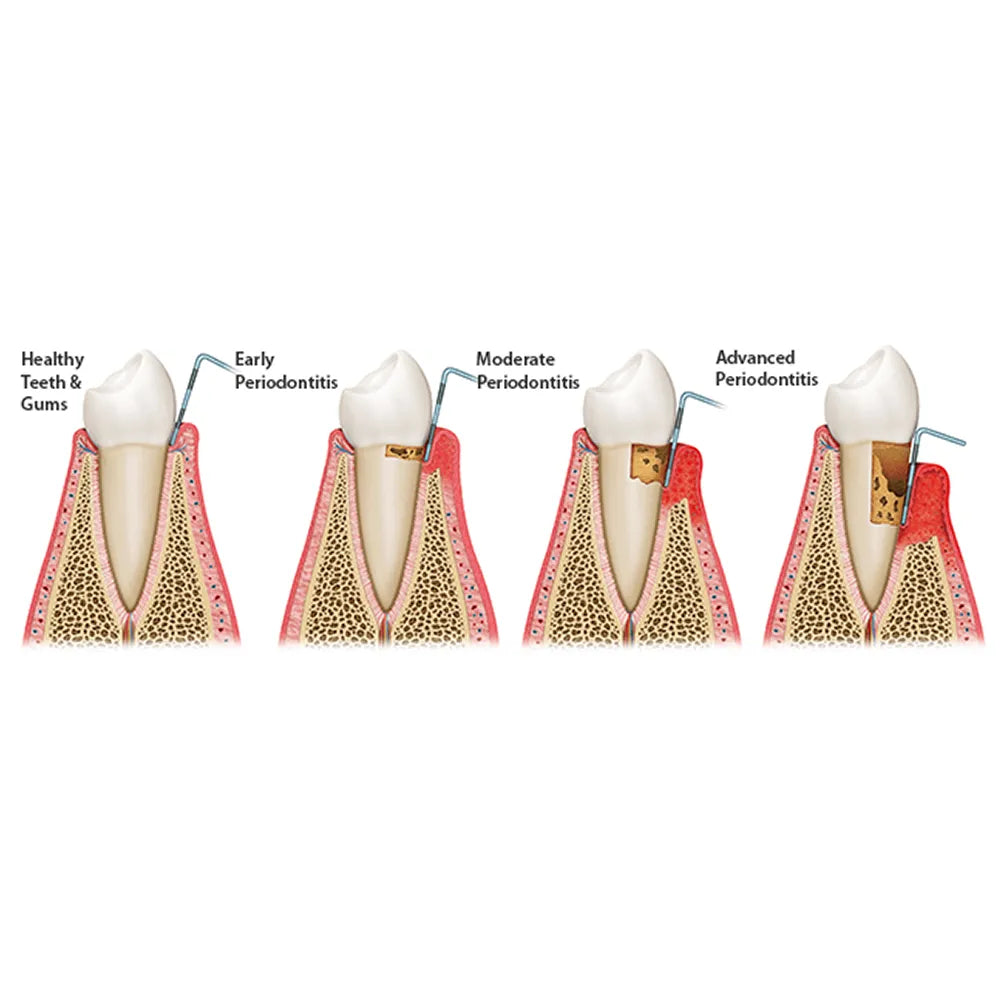GDC
GDC Double End Probes Unc 15 / Screening Probe #1 (PCP15/11.5)
GDC Double End Probes Unc 15 / Screening Probe #1 (PCP15/11.5)
Couldn't load pickup availability
GDC Double End Probes Unc 15 / Screening Probe #1 (PCP15/11.5)
GDC Double End Probes Unc 15 / Screening Probe #1 (PCP15/11.5) is a dental instrument used by dentists and dental hygienists for periodontal probing and screening. It consists of a double-ended design with different measurements on each end. The "Unc 15" marking refers to the first end of the probe.UNC15 Probe has markings mm1-2-3-4-5-6-7-8-9-10-11-12-13-14-15 and Screening Probe has markings mm 3.5-5.5-8.5-11.5 inscribed onto the head of these instruments for accuracy and readability.
The "Unc" stands for "universal" and indicates that this end is a universal curette. The number "15" indicates the specific design and size of the working end. In this case, it represents a curved working end with a diameter of 1.5 millimeters. The universal curette is commonly used for subgingival (below the gumline) scaling and root planing procedures. It can help remove plaque, and calculus (tartar), and smooth the root surface.
The second end of the probe is labeled as "Screening Probe #1" or "PCP15/11.5." This end is specifically designed for periodontal screening and measuring pocket depths. "PCP" stands for "Periodontal Community Probe," and the number "15" indicates the working end's diameter, which is 1.5 millimeters. The "11.5" represents the marking increments on the probe, indicating the millimeter markings from the tip of the probe to its base. These markings help measure the depth of periodontal pockets, which can be an indicator of gum disease or other oral health conditions.
Features
Features
- Double-ended design: This probe has two different ends, allowing for versatility in dental procedures. One end is a universal curette (Unc 15), while the other end is a screening probe (PCP15/11.5).
- Universal curette (Unc 15): The first end of the probe features a universal curette design. This curved working end with a diameter of 1.5 millimeters is commonly used for subgingival scaling and root planing procedures. It helps in the removal of plaque and calculus from the root surfaces.
- Screening probe (PCP15/11.5): The second end of the probe is specifically designed for a periodontal screening and measuring pocket depths. It has a diameter of 1.5 millimeters and is marked with increments (11.5) to measure the depth of periodontal pockets accurately.
- Periodontal probing: The probe allows dentists and dental hygienists to assess the health of the gums and measure pocket depths. This information is crucial for diagnosing and monitoring gum disease or other oral health conditions.
- High-quality construction: The GDC Double End Probes Unc 15 / Screening Probe #1 is typically made of high-quality stainless steel or other durable materials. This ensures its longevity and resistance to corrosion, enabling repeated use in dental settings.
- Accurate measurements: The probe is marked with clear millimeter increments, facilitating precise measurements of pocket depths. This helps in tracking changes in gum health over time and planning appropriate treatment interventions.
- Ergonomic handle: The probe's handle is designed for comfortable gripping and control during dental procedures. This ergonomic feature allows for better maneuverability and reduces hand fatigue during extended use.
Description
Description
Specification
Specification
- Type: Periodontal Probe
- Category: Periodontal Instrument
- Material: Stainless Steel
- Disposable / Reusable: Reusable
- Sterile / Non-Sterile: Non - Sterile
Packaging
Packaging
- 1 x Probe
Direction to use
Direction to use
- Prepare the patient: Ensure the patient is comfortably positioned in the dental chair, and have all necessary equipment ready, including gloves, mask, and appropriate lighting.
- Sterilize the instrument: Before use, make sure the probe is properly sterilized according to standard infection control protocols. This helps prevent the spread of infectious agents.
- Position the patient's head and access the treatment area: Position the patient's head so that you have good visibility and access to the teeth and gums that require examination or treatment.
- Hold the probe correctly: Grasp the handle of the probe firmly but comfortably, ensuring a secure grip. The handle is designed to provide ergonomic control during use.
- Start with the desired end: Determine which end of the probe you want to use first, either the universal curette (Unc 15) or the screening probe (PCP15/11.5).
- Periodontal probing: For periodontal probing, gently insert the working end of the probe into the gingival sulcus or periodontal pocket. The gingival sulcus is the space between the tooth and the gum tissue. Use a controlled, delicate touch to prevent discomfort or tissue damage.
- Assess pocket depth: As you insert the probe into the sulcus, carefully move it along the tooth surface, measuring the depth of the pocket. Read the millimeter markings on the probe to determine the pocket depth accurately. Repeat this process for each tooth or area you are examining.
- Universal curette (Unc 15): If using the universal curette end, position the curved working end against the tooth surface and use it to remove plaque and calculus by scraping gently along the root surface. This is typically done below the gumline during scaling and root planing procedures.
- Rinse and reevaluate: After probing or using the universal curette, rinse the area to remove debris. Take a moment to evaluate the findings and determine the appropriate treatment plan or further examination if necessary.
- Clean and sterilize: After use, clean the probe thoroughly according to recommended protocols and sterilize it for future use.
Additional info
Additional info
- Country Of Origin: India
- Manufacturer: GDC Fine Crafted Dental Pvt. Ltd.
Warranty
Warranty
- 6 months warranty against rust.
Product Related Questions
Product Related Questions
Question: How often should dental probes be sterilized?
Answer: Dental probes should be sterilized before each use to prevent the transmission of infections or diseases. Following proper infection control protocols, including sterilization, is essential in dental practice.
Question: Can dental probes be used on dental implants?
Answer: Yes, dental probes can be used on dental implants, but special care must be taken to prevent damage to the implant or surrounding tissues. Dental professionals should use plastic or titanium probes specifically designed for implants to avoid scratching the implant surface.
Share
